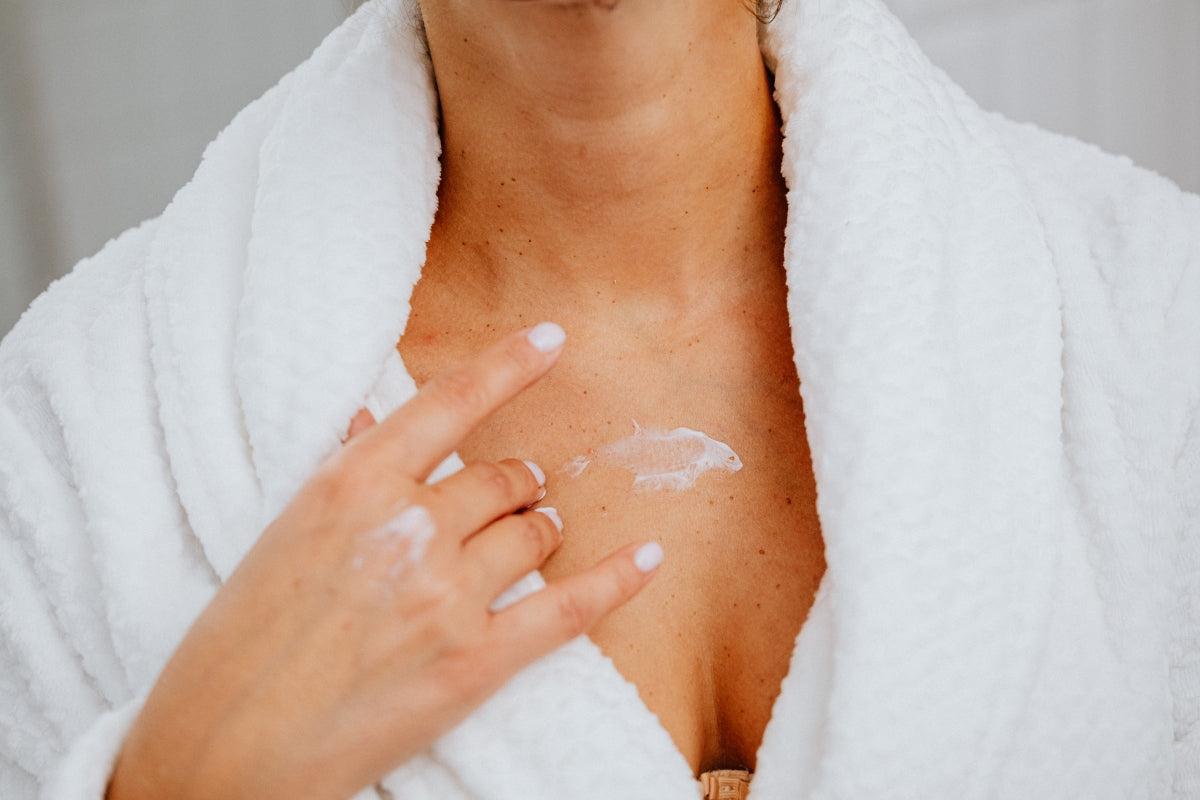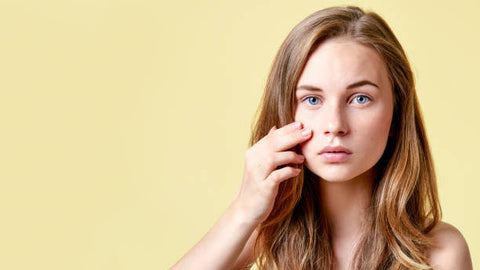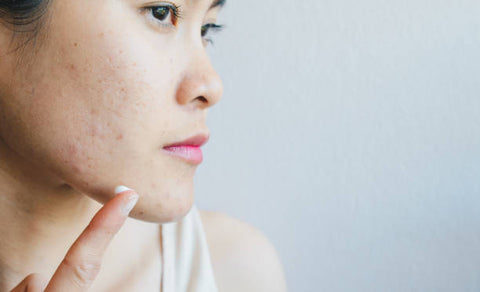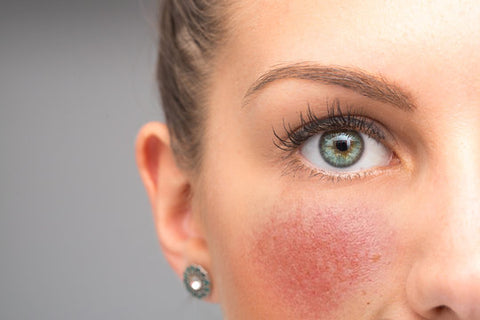10 Most Common Skin Conditions: Symptoms and Solutions

Skin conditions refer to problems affecting the skin due to irritation or inflammation, among others. Take a look at ten of the most common skin conditions, their causes, and how to treat them.
1. Acne
Acne is the skin condition that results when sebum or the greasy secretions from the body's oil (sebaceous) glands block the tiny openings for hair follicles. The blockages may take the form of blackheads or whiteheads, both of which can develop into swollen and tender inflammation in the deeper part of the skin.
Hormonal changes can cause sebaceous glands to increase oil production, resulting in acne. This is why teenagers, pregnant women, and menopausal women tend to have acne.
Some people may be prone to acne due to their family history, the use of medication (as a side effect of steroids), and medical conditions such as polycystic ovary syndrome.
Treatment: Topical creams and other over-the-counter products can be used to treat non-inflammatory acne like whiteheads and blackheads. Check labels to ensure that they include the best ingredients for acne-prone skin. A balanced diet and a healthier lifestyle also help naturally produce clearer skin. Meanwhile, you may need to consult a dermatologist for inflammatory acne (papules, pustules, nodules, and cysts).
2. Eczema
Eczema is characterized by reddish and itchy patches on the face, hands, feet, behind the knees, and inside the elbows. If dermatitis, asthma, or hay fever runs in your family, you may also be prone to get eczema. An over-reactive immune system, irritants in the environment, humidity, and stress also contribute to this condition. Flare-ups can occur periodically with different levels of severity.
Treatment: As eczema can dry the skin, regular application of moisturizer is necessary. Products with nitric oxide are providing relief to eczema sufferers due to their anti-inflammatory properties.
3. Psoriasis
Psoriasis is characterized by red and scaly skin. This is triggered by a highly sensitive immune system, causing new skin cells to develop every three to four days instead of once a month. It makes old skin cells pile up instead of shedding off.
Psoriasis is hereditary. Other factors include stress, injury to the skin (vaccination, scratches, bug bites, and sunburns), medication (beta-blockers for lowering blood pressure and anti-malarials), throat, sinus, or upper respiratory tract infection, cold weather, and allergies.
Treatment: You may need to see a doctor to diagnose your type of psoriasis. They’re likely to advise the more frequent use of moisturizers as well as oral medication to ease inflammation and swelling.
4. Rosacea
Rosacea can look a lot like acne due to the appearance of pimples. It is limited to the face only and usually only affects those aged 30-50.
There are four rosacea subtypes. Practitioners are adopting a new approach for diagnosis that focuses on the symptoms that are unique to each patient.
The actual cause of rosacea is unknown. Medical practitioners theorize that it could be due to a disorder of the blood vessels or microscopic fungus. Hot and alcoholic drinks, as well as spicy, food may also trigger flare-ups.
Treatment: Depending on your symptoms, doctors can prescribe topical medicine or use surgical procedures like laser to remove visible veins and correct nose disfigurement. They’re also likely to recommend a facial wash with ingredients that cater to rosacea skin.
5. Sunburn or sun damage
Overexposure to ultraviolet (UV) rays from the sun or tanning beds can cause sunburn. They can also cause sun damage, the effects of which —such as sunspots, wrinkles, and other premature skin aging marks—come out later compared to sunburn.
Treatment: Applying sunburn cream or a cold compress and taking a cool shower can provide relief to burned skin. Avoid touching or peeling skin around blisters caused by sun exposure. For daily UV protection, use broad-spectrum (for both UVA rays that cause skin aging and UVB rays that burn the skin), water-resistant sunscreen with a sun protection factor of 30 or higher.
6. Cold sores
These small, painful blisters that usually appear around the mouth, on the nose, or on the cheeks are due to the herpes simplex virus type 1 (HSV-1). Also called fever blisters, this type of herpes can be transmitted by touching infected skin, saliva, or mucous membranes through kissing and physical contact, such as sharing towels, eating utensils, and other personal items.
Genital herpes is caused by a different strain of the herpes virus (HSV-2). But individuals who have oral sex with HSV-2 carriers may also develop cold sores, even if the carrier doesn't have visible signs of infection.
Treatment: Doctors may prescribe antiviral medicine, ointments, or skin creams to ease itching, tingling, or pain around the mouth and lips. Further medical examination will be required if sores persist for over two weeks or appear near the eyes.
7. Shingles
The virus that causes chickenpox, the varicella-zoster virus, is the same culprit behind shingles. Shingles appear as a band of fluid-filled blisters in one side of your body, typically one's torso. Those who have had chickenpox will continue to carry this virus after they recover. The virus can become reactivated years later when one’s immune system grows weak due to a drug or disorder. The virus can be spread through skin-to-skin contact, mainly through the fluid from the blisters.
Treatment: Doctors would typically prescribe oral antiviral medicine to reduce discomfort and shorten the duration of symptoms. Placing a wet and cool compress and applying anti-itch lotion can also lessen the itching and pain.
8. Hives
Hives (urticaria) are red, itchy bumps on the skin that typically appear due to an allergic reaction, medical condition, or physical triggers.
There are two types of hives. Chronic hives that last over six weeks may indicate other health conditions such as hormonal imbalance, thyroid disease, or even cancer. Meanwhile, physical urticaria results from sun exposure, drastic temperature change, pressure, or exercise. Colds, urinary tract infection, insect stings, food (such as nuts, shellfish, and eggs), antibiotics, irritants (such as pet dander, latex, or pollen) can also trigger hives.
Treatment: Dermatologists may recommend an anti-itch solution or antihistamine, depending on the severity of your hives. You should see an allergist if hives persist beyond six weeks or despite antihistamine intake.
9. Contact dermatitis
You can develop contact dermatitis from coming into contact with something that irritates your skin or causes an allergic reaction. These include jewelry, cosmetics, soap, and even plants. Itchiness, swelling, skin discoloration, tenderness in the affected area, burning sensation, dryness, flaking, and blisters with fluid or scales are some signs of this condition.
Treatment: Consult a dermatologist to help you identify what's causing your rash. You may have to undergo a skin test as part of the examination. Once the irritant or allergen is named, doctors would help patients make a realistic plan to avoid these triggers and prescribe necessary medication.
10. Warts
Warts are small, rough, grainy lumps on your skin. The very black pinpoints that appear on these skin growths are small, clotted blood vessels. They emerge on the hands, feet, face, neck, forearms, and chest.
This skin condition is caused by the human papillomavirus (HPV), which spreads through direct skin contact with those infected with the virus. HPV is also transmitted by sharing objects used by HPV carriers. Broken or cracked skin makes one more susceptible to the virus.
Treatment: Most warts disappear between six months and two years when left alone. But if they persist, make you feel uncomfortable, or start to spread, consult your doctor. Your dermatologist might go for peeling medicine, salicylic acid plasters, or minor surgery.


